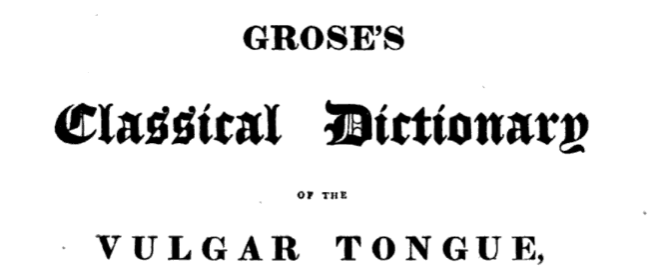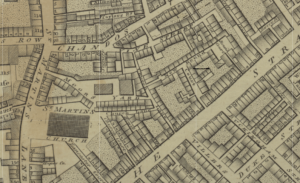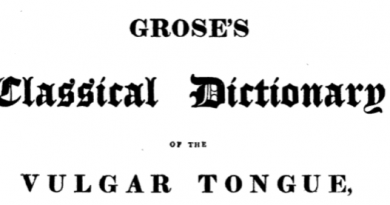Dictionary of the Vulgar Tongue – Day 257, 258 and 259
The Dictionary of the Vulgar Tongue was first published at the end of the eighteenth century, and given that the current health crisis is giving too much time to read books, I thought I’d pick a daily word from it until I got bored…. And to catch up after getting behind with these posts, and because I’m getting towards the end of the book, I’m doing three days at once now. How lovely….
Pin Money
This is defined by Grose as “an allowance settled on a married woman for her pocket expenses” and it would have primarily been used to buy clothing and accessories (accessories here more defined as pins than anything more decadent). Sometimes it meant the sum of money given to the woman to run the household and there are some legal cases where pin money was given to women as settlements (not unlike today’s divorce arrangements). The phrase came into use in the mid-sixteenth century and is still used today, although usually in a wider meaning of just giving or paying someone a small amount of money.
Plumb
The definition here is “an hundred thousand pounds”, with Grose’s use of the word ‘an’ being common at the time as the ‘h’ of hundred was often not very clearly pronounced. This word could be spelled as ‘plum’ without the ‘b’ and the word ‘plum’ also meant wealthy, although I’m unsure why it came to mean £100,000 in particular. The word was mostly used by the criminal underworld and there were references to a ‘quarter of a plum’ and ‘half a plum’, so £25,000 and £50,000 respectively. It faded out of usage by around the middle of the nineteenth century.
Porridge Island
This is another one of Grose’s geographical definitions, “an alley leading from St. Martin’s church-yard to Roundcourt, chiefly inhabited by cooks, who cut off ready-dressed meat of all sorts, and also sell soup”.
This is Horwood’s map of London from 1790, so from the same time as Grose’s book. St. Martin’s churchyard and the Roundcourt can be seen on the map (clicking on the map makes it larger). This is today a much visited part of London, as St. Martin’s Church still stands and is now on the edge of Trafalgar Square, which was laid out in the 1820s. Unfortunately, nothing else remains of the street plan where Roundcourt once stood, although the line of The Strand is unchanged. This part of London is now relatively modern and in places quite soulless, it must have been rather a sight to have seen this area inhabited by cooks selling their soup.




